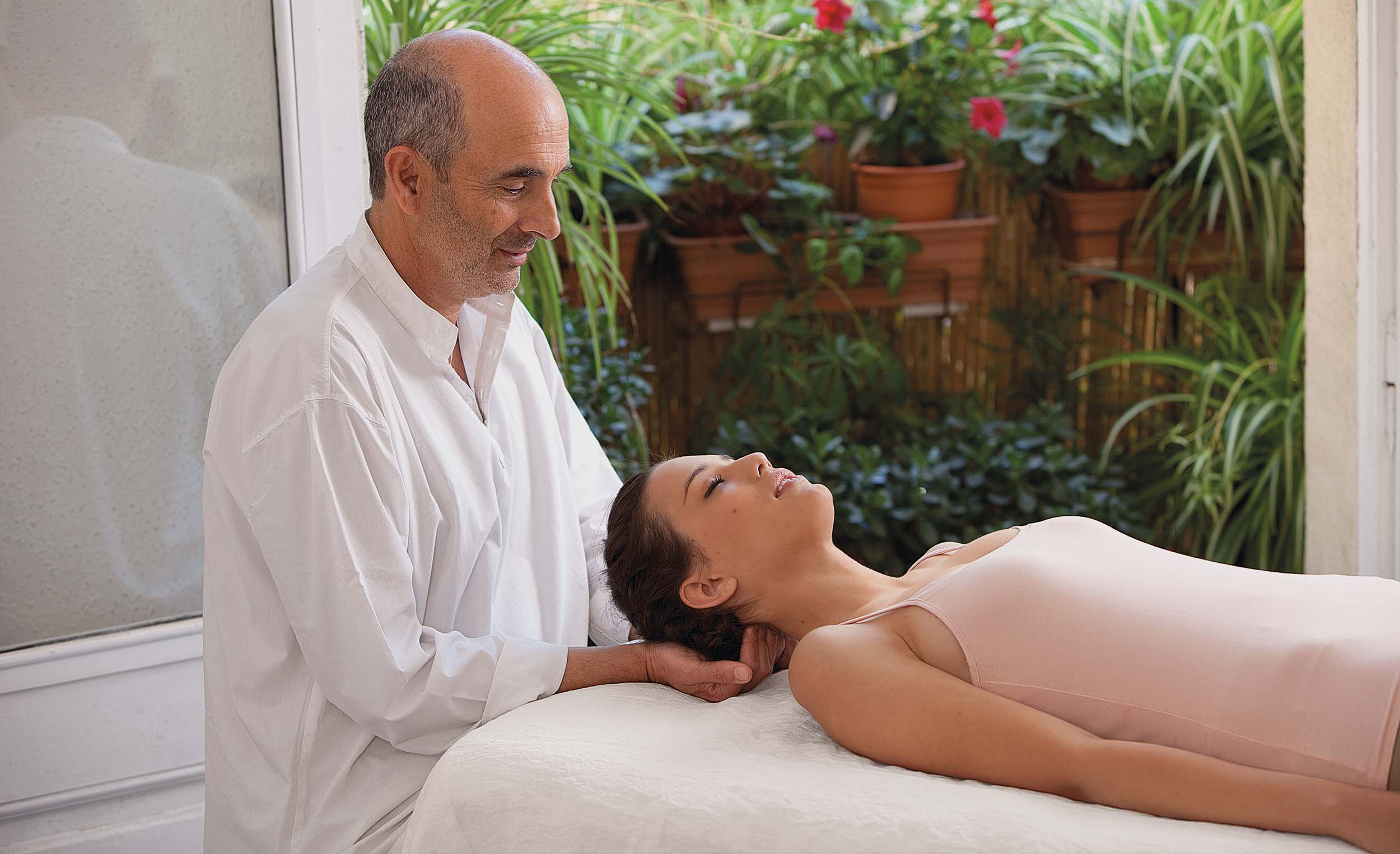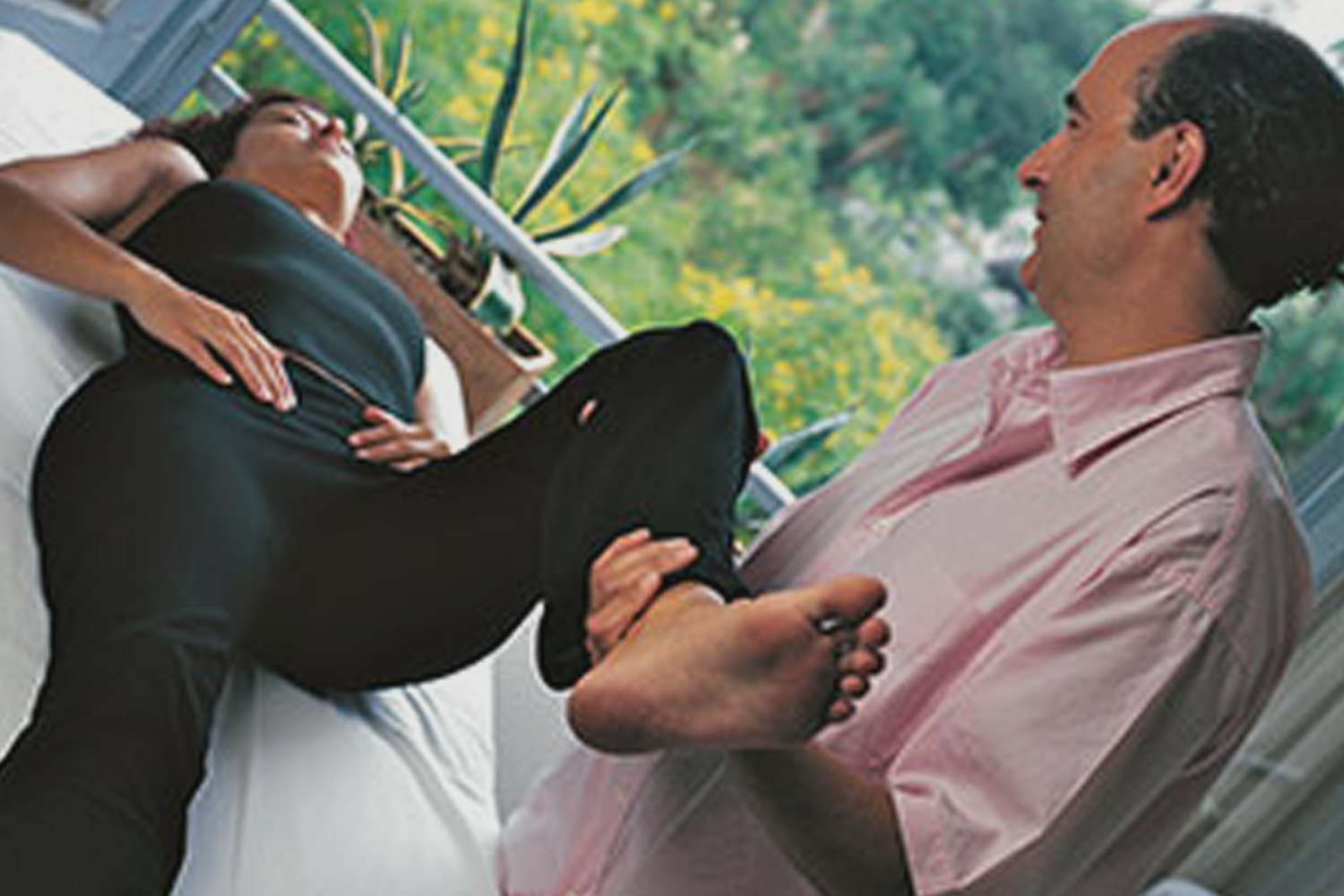Training 2025
Basic Craniosacral Training
Basic Craniosacral Training 2025
Reus – 4 weekends
This is a basic Craniosacral training divided into 4 weekend seminars. We will begin the weekend of September 20, 2025, and end the weekend of December 13, 2025.
Between seminars, it is recommended to practice what you have learned. At the end of each weekend, a manual workbook with the material given in the seminar will be distributed (4 workbooks in total), and at the end of the 4th seminar, a certificate / diploma of participation will be awarded. We will also give multiple-choice exams during the course to do at home.
The training is open to professionals and non-professionals. It covers the scientific aspects, the anatomy and physiology of the craniosacral system, visualization exercises to experience the anatomy in a real-life way, demonstrations of different techniques by the instructors, as well as the gradual accumulation of practical and experiential experiences through the exchange of sessions between participants.
Places are limited to 8 participants (with one table for every two people), promoting in-depth and dynamic learning, ensuring closer monitoring of each participant and a stress-free environment.
For students who wish to continue the training, we will begin the Advanced Craniosacral-1 training in 2026.

If this is your first time exploring bodywork, you can learn and develop your perception skills and techniques through theoretical and practical sessions. Practical sessions are fundamental to our teaching method. If your professional activity is related to health, this is an opportunity to deepen your skills and learn to work with your body, mind, and emotions, experiencing the work with yourself and others.
Dates of the 4 seminars:
September 20 and 21, 2025
October 18 and 19, 2025
November 15 and 16, 2025
December 13 and 14, 2025
none
Program
The program is for guidance only and is summarized
Craniosacral Level 1
- Introduction to the theory and practice of Craniosacral Therapy (CST).
- Anatomy and physiology of the craniosacral system.
- The “breath of life” and the “tide” according to Sutherland.
- Reciprocal tension membranes and “Primary Respiratory Mechanism” (PRM). Vertical and horizontal system of intracranial membranes.
- We will develop the art of palpation and listening: the basis of manual work. Liquid Touch.
- We will develop the ability to sense the craniosacral rhythm. Inhalation/exhalation, flexion/extension.
- Practice different listening positions.
- Fascia as a global body system. The transverse diaphragms: pelvic, respiratory, thoracic inlet, hyoid, and cranial base.
- Passive palpation: theory and practice. Tissue memory.
- Facilitator’s fulcrum. The Midline. Establishing Safe Therapeutic Contact.
- Pelvic Diaphragm Release: Demonstration and Practice.
- Respiratory Diaphragm Release: Demonstration and Practice.
- Thoracic Cavity Release: Demonstration and Practice.
- Still Point: Description and How to Induce It.
- Still Point Induction Technique in the Heels.
- Sacral Still Point Induction Technique.
- CV4 Technique.
- Still Point Self-Induction.
- Dural Tube and Vertebral Release Process.
- Rocking-Stretch Technique (occipital and sacral).
- The quality of presence in the facilitator. Concepts of quantum physics.
- The pelvic diaphragm in depth.
- Dynamics of the pelvis and the mobility of the sacrum in response to the MRP.
- The relationship between the base of the skull and the pelvis. When releasing the pelvis releases restrictions in the skull.
- Lumbosacral decompression technique: L5-S1.
- Sacroiliac decompression technique or “bridge with the arms”.
- Hyoid bone in depth (fourth diaphragm): anatomy and physiology. The “path of expressing my true.”
- Hyoid release technique.
- Skull: anatomy and physiology. “The Living Skull.”
- The suture system.
- Mobility of the intracranial membranes.
- Differentiate between rigid and elastic resistances in the skull.
- Frontal bone depth: anatomy and physiology.
- Diagnosis and normalization technique.
- Parietal bones depth: anatomy and physiology.
- Normalization technique.
- We will do visualization exercises to experience the anatomy within ourselves.
- Practice the principles in individual sessions.
- Suboccipital diaphragm in depth (5th diaphragm): anatomy and physiology.
- Occipital bone: anatomy and physiology.
- The occipito-atlantoid joint in relation to birth and the distension of birth patterns in adults.
- Occipital joint release technique (three phases): AO.
- Sphenoid bone in depth (1): anatomy and physiology. Fulcrum of cranial dynamics and its relationship to hormonal function (the pituitary gland). The sphenoid bone and inner vision: “vision is weak, perception is strong.”
- Basic release technique: compression and decompression.
- Temporal bone in depth: anatomy and physiology.
- Basic release technique: “pulling the ears.”
- Protocol for cranial treatment.
- Review and practice of the basic protocol: 18-step session.
- Mandibular bone in depth: anatomy and physiology.
- Basic release technique for the TMJ (external): compression, decompression.
- Syndrome of the temporomandibular joint.
- Preparation for mandibular work: masticatory muscles and emotions.
- Temporomandibular muscle in depth.
- Release technique for the masticatory muscles: temporalis.
- Masseter muscle in depth.
- Release technique for the masticatory muscles: masseter.
- Lateral pterygoid muscle/strong> in depth.
- We will do visualization exercises to experience the anatomy within ourselves.
- Practice the principles in individual sessions.
Place
Mandala Psychology Center
C/ Jurats 2, 4º, door A,
43205, Reus
- 10-minute walk from Reus train station
- 3 minutes from La Pastoreta car park (4 euros for all-day parking)
- 1 hour from Barcelona by car
For those who need to stay overnight in Reus, there are many options, with different prices.
Schedules
The first seminar will begin on Saturday, September 20, from 10:00 a.m. to 7:00 p.m., and on Sunday, September 21, from 9:30 a.m. to 2:00 p.m.
The workshop also serves to work on your own energy and share creatively with others through therapeutic touch.
Information
What you need
Comfortable clothing (socks and sneakers), a notebook for taking notes, and a sarong or shawl.
Limited places
Places are limited to 8 participants (with one stretcher for every two people), promoting in-depth and dynamic learning, ensuring closer monitoring of each participant and a stress-free environment. Reserve your place in advance, as the course has limited capacity. The course will not start if the minimum number of participants is not met, and the start time may be delayed.
Attendance
Attendance at all seminars is important. In exceptional circumstances, if it is impossible to attend a seminar, the possibility of making up the session in a private class (morning or afternoon) outside of the scheduled time, agreed between the teacher and the student, may be considered. In any case, the full amount of the seminar must be paid.
At the end of each seminar, a workbook containing the seminar materials will be provided. At the end of all four seminars, a certificate of participation will be awarded.
Price
4 seminars at €240 each (total: €960) and registration fee of €100 (this price includes the manuals given at the end of each weekend and the end-of-course certificate).
To reserve your place it is essential to pay the registration fee of 100€ to a Bizum account that we will give you or a transfer to the La Caixa account: 2100- 0166- 01- 010123—- (Please notify us in advance by phone). The €240 for each course will be paid at the center on the Saturday before each weekend begins week. The course will not start if there is not a minimum number of participants, and the start may be delayed.

Basic Craniosacral Training 2025
Reus: 4 weekly caps
It is a basic Craniosacral training divided into 4 weekly chapter seminars, we will begin the weekly chapter on September 20, 2025 and finish the weekly chapter on September 13, 2025.

Advanced Craniosacral Training - 1
Reus: in 4 weekend caps
It is an advanced Craniosacral training divided into 4 weekly chapter seminars, which will begin on February 21, 2025 and end on May 2, 2025.

Advanced Craniosacral Course- 2
Emotional Alliberation Panizo Method
This course is directed for therapists oriented to what has been done at the basic level of Craniosacral Therapy in both nostrils and also for other craniosacral therapists in other schools with experiences that involve working on the emotional part of their clients or that are affected by trauma. The six sessions seek perspectives, safe and practical practices for the benefit of the six needs.
